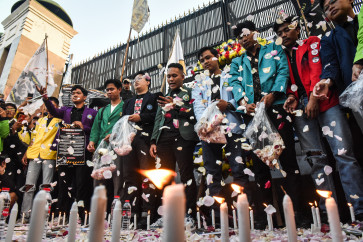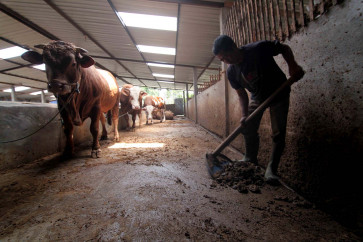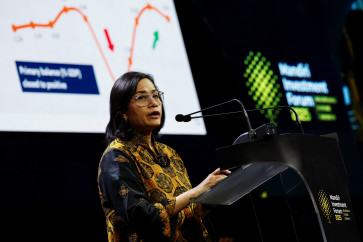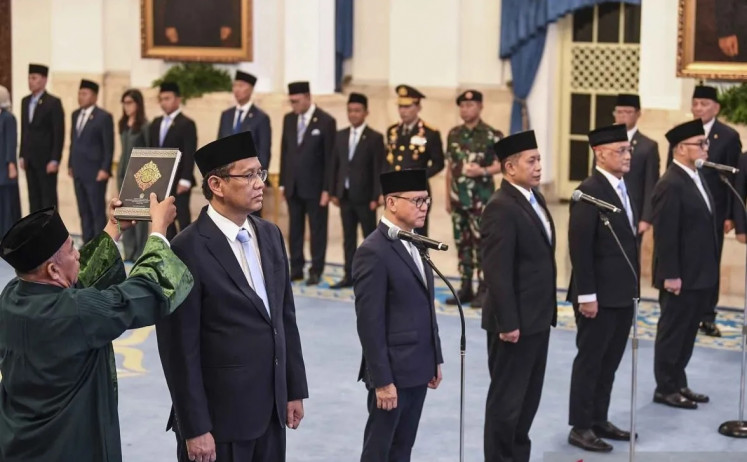Popular Reads
Top Results
Can't find what you're looking for?
View all search resultsPopular Reads
Top Results
Can't find what you're looking for?
View all search resultsGreen Map project to survey lakes, dams in Greater Jakarta
Volunteers from the Jakarta Green Map project are planning to map lakes and dams in Jakarta and surrounding areas and record their conditions in the wake of the Situ Gintung disaster last month
Change text size
Gift Premium Articles
to Anyone
Volunteers from the Jakarta Green Map project are planning to map lakes and dams in Jakarta and surrounding areas and record their conditions in the wake of the Situ Gintung disaster last month.
The man-made earthen wall of the Situ Gintung reservoir in Tangerang burst last month, sending a deadly torrent of muddy water to nearby villages. More than 90 people were killed and hundreds of homes destroyed.
Jakarta Green Map coordinator Nirwono Joga said Saturday there are around 200 lakes and dams in the Jakarta, Bogor, Tangerang, Depok and Bekasi area that needed checking.
Nirwono, who is also the head of the Indonesia Landscape Architecture Study Group, has warned of a calamity, after conducting three surveys of Jakarta's dams in 2005, 2007 and 2008.
Some 50 volunteers joined a workshop for the mapping of lakes and dams at the Komunitas Salihara cultural centre in South Jakarta on Saturday.
"We hope to be able to survey around 50 to 100 lakes and dams," Nirwono said, adding the map would be launched in July.
The volunteer-based project has released five editions of the Jakarta Green Map since 2001.
The latest one, launched in March, features how to reach interesting lesser-known locations in the city, including green spaces and historical sites, by environ-mentally friendly modes of transportation.
The first Green Map, made in 2001 by a group of residents, architects and media workers, was of Kemang in South Jakarta. The second, of Kebayoran Baru, also in South Jakarta, was made in 2002. A year later, Menteng in Central Jakarta had its turn, while the fourth green map, of the Old Town in West and North Jakarta, was made in 2005.
Nirwono also launched Saturday a book, Bahasa Pohon Selamatkan Bumi (The Language of Trees Saves the Earth), about how trees could help stave off global warming.
Nirwono worked on the book for three years. Photographer Yori Antar provided the images in the book.
He said he wanted to inspire people to change the city into a greener place by starting at home.
"The book is for the general public. Anyone can read it as it's written in popular language," he said.
The book's front cover is orange, which Nirwono says reflects the state of Indonesia's cities, especially Jakarta.
"Our cities are heading into a red zone, a critical condition. If we don't do anything about it, Indonesian cities will be ruined and will turn red," he said.
A World Bank study reportedly showed that unless action is taken, much of the coastal city of Jakarta will be submerged by seawater by 2025.
Climate change is causing sea levels to rise, but the study's authors say the main problem is that Jakarta is sinking under the weight of out-of-control development.
Nirwono's book consists of five parts.
"The first is about finding our identity; the second is the city's orange state; the third, fourth and fifth parts are about solutions. The third part talks about building a greener house, the fourth part is about creating a green environment, and the fifth part is about creating a green city," he said.










